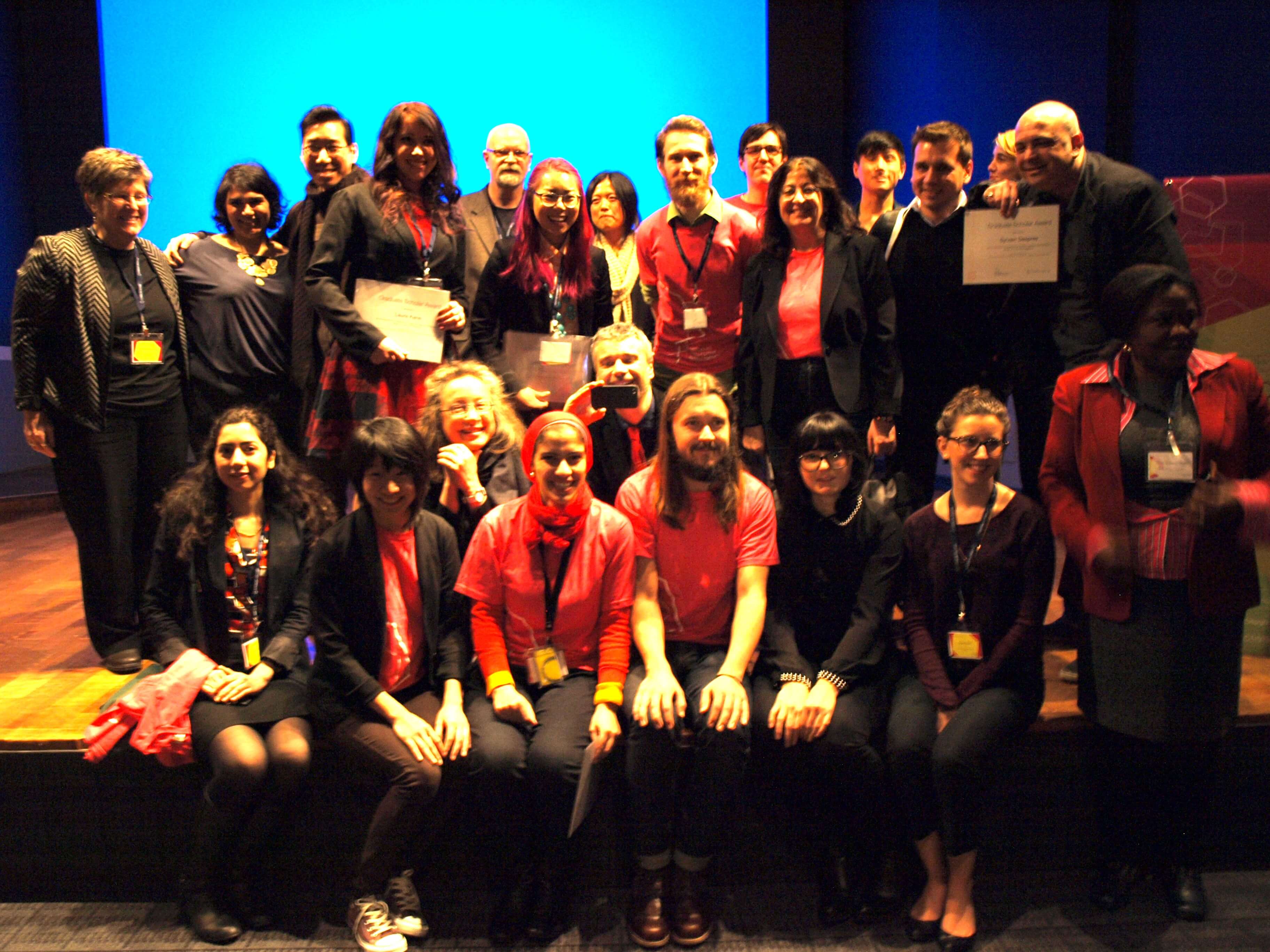Design is our collective intelligence: it shapes the world we live in. We can recognize design in the materiality of our objects, the environments we dwell in, and the visual communications we share. It pervades every form of societal expression; we conceive our material and virtual world through design. Design is the common ground of everyday life, the layer connecting the way we perceive our worlds, cultures and societies. It helps to guide how we respond to and care for our Earth.
The theme of the 8th International Design Principles and Practices Conference acknowledges the work of Pierre Lévy, who described collective intelligence as “…a universally distributed intelligence that is enhanced, coordinated, and mobilized in real time.” Where Lévy claimed computational media as the locus of a new language of collective intelligence, we contend that this language resides in the material as well as the digital. The physical and visual dimension of artifacts, services, environments and architecture is a language of collective intelligence.
This language emerges through ongoing dialogue between the work of designers and the collective knowledge of societies. These actors are dialogically inseparable. Designers are interpreters who inherit, reflect and preserve collective memory. Society is both the source and the responder. It generates commentary on the material and symbolic contributions of design and its designers. The responses of society are often unspoken; design research methodologies can increase our ability to hear and interpret them.
Many of the 275 delegates from 30 countries at this conference discussed research methodologies for enhancing this dialogue. The conference was co-hosted in Vancouver by two venerable Canadian institutions: Emily Carr University of Art + Design and the School of Industrial Design at Carleton University. Six keynote speakers reflected on the theme. They also touched on emerging missions and visions of future design education, research and practice, along with environmental, economic, political and social impacts of the era.
Lorraine Justice wrote the first book on industrial design in China, China’s Design Revolution. This pioneering researcher called for designers to open ourselves up to learn about other cultures: “Asian cultures have not hesitated to study us, but we thought that we did not need to learn about them. We have so much to learn.”Alex Beim is a developer of extraordinary interactive technologies. He asserted that in addition to learning about other cultures, we must bring a lens of criticality to the impact of design. He asked, “Where do technologies bring people together, and where do they isolate us?” These questions highlight the growing social responsibility of designers and the necessary learning that builds design as collective intelligence.

Keynote speakers Jorge Frascara and Guilllermina Noël described how they used iterative prototypes to clarify problems with existing medical brochures. The interplay around these artifacts generated conversations between designer, client, and audience that resulted in the design of effective solutions. Gregory Henriquez highlighted how architecture can establish conditions for community and become a catalyst for citizens to reclaim their cities. He noted that it takes patient listening to arrive at an ethical design response. These speakers demonstrated how collective intelligence becomes embodied in artifacts over the duration of a meaningful exchange between stakeholders.
The conference was also an opportunity to examine the character of Design in Canada: its roots, professional context, and emerging design research. In her keynote address, Bonne Zabolotney offered the historical view: anonymously designed products ranging from kitchen tools to entire homes were once purchased throughout Canada via ubiquitous mail order catalogues. This provided a consistent physical and visual language of artifacts across this wide country. Artist and designer Tania Willard touched on contemporary local politics, describing how her work endeavors to convey the values and needs of Canada’s First Nations peoples. Tania perceives design as collaborative tool that offers praxis for the articulation of social justice values. Both speakers illustrated how design engages in domestic, local and social dialogues.
Discussions at this conference highlighted the imperative to find ever more creative ways to bring multiple voices to shape the language of design as collective intelligence. This implies collaboration beyond expected domains. Design is in a state of flux, and contemporary designers draw upon dispersed sources for insight, creativity and innovation. The roles, the tasks and the identities of designers are changing. Emerging design methodologies can support broad-ranging and holistic understanding between and across disciplines, and help us to connect, hear, and integrate the unfamiliar. The final message coming from the keynotes highlighted how the new politics of design today are building deeply collaborative relationships with our public, developing an ever-more social, indeed sociable, process.
Emily Carr MDes Students Present at the Conference
Emily Carr master students reflect on their presentations at the Collective Intelligence Conference.
The role of designers in the creation of products and services.
Andreas Eiken, industrial designer
Behavior change in design.
Bree Galbraith, communication designer
Human centred, participatory design in health care.
Caylee Raber, communication designer
Lorenzo Imbesi, Arch PhD Professor, Sapienza University of Rome
Louise St. Pierre, Associate Professor, Emily Carr University of Art + Design
Co-Chairs, 8th Annual Design Principles and Practices conference
References
[1] Lévy, Pierre, Collective Intelligence: Mankind’s Emerging World in Cyberspace. Cambridge: Perseus Books 1997. 16.
